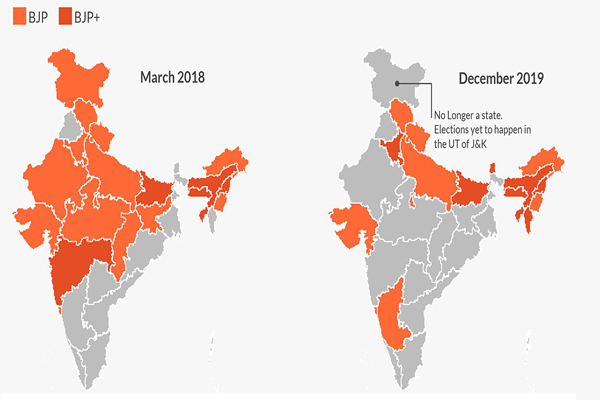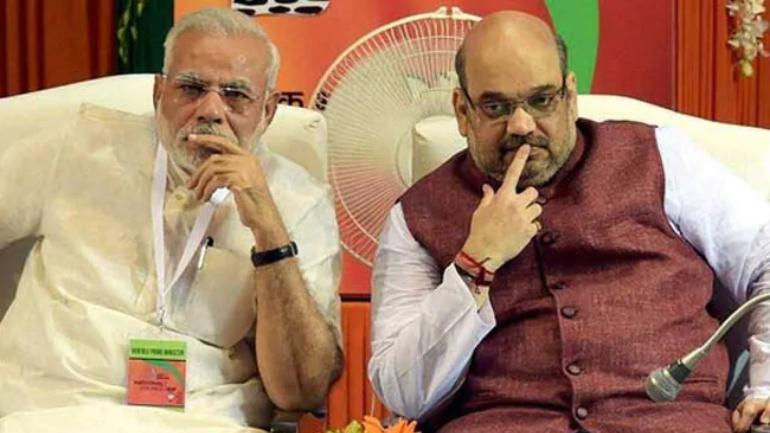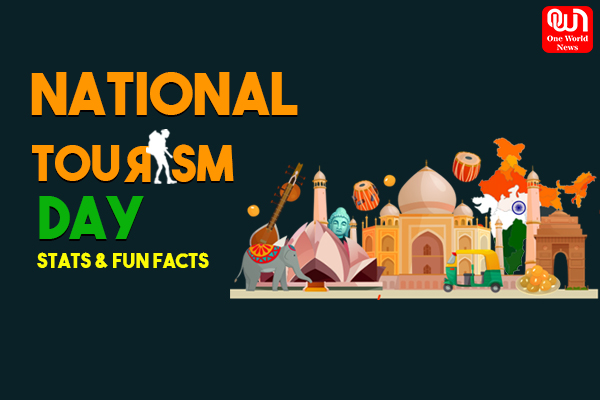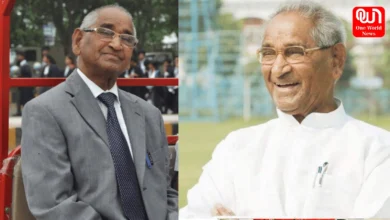
Finding the reasons for BJP’s loss in Jharkhand, MP, Rajasthan, Chhattisgarh, and Maharashtra
Bhartiya Janta Party recently lost in the Jharkhand election. With this loss, BJP’s political map of India has now shrunk to a mere 34 percent which was nearly 70 percent of the total geographical area of the country in 2018. This is a little surprising for BJP supporters as they witnessed BJP triumphing the General Elections earlier in 2019.
Downward Spiral of Bhartiya Janta Party
BJP was ruling in 13 states on its own and 6 states with their allies in March 2018. With Jharkhand losing from the grip, they now rule 8 states on their own and 8 states with allies. Ruling- 16 states might not look less-enough, but these 16 states account only for 34 percent of the total geographical area. They have almost lost half of the geographical from their grip in less than 2 years.
The downfall for BJP started with losses in politically crucial states of Madhya Pradesh, Chhattisgarh, and Rajasthan. While the margin of loss was less in Rajasthan and Madhya Pradesh, but they suffered a humiliating defeat in Chhattisgarh. Losing Maharashtra to its former ally Shiv Sena is the biggest failure of BJP in 2019. They fought the election together which helped Shiv Sena in getting more votes but, after the election, both the parties were not able to settle for an agreement to run the government.

Even in Haryana, BJP had to take help from Dushyant Chautala’s JJP to form the government as they couldn’t reach the majority mark.
What are the possible reasons for BJP losing its ground in state elections?
Experts believe that over-dependency on the Modi-Shah has cost them in state assembly elections. While the duo by far remains the best election pair any political party can hope for, but their track record in retaining states is not that great. Although the Modi- Shah combo worked wonders during 2013-2018, they haven’t been able to repeat performance in most of the states.
Another reason for BJP’s loss is maintaining a social coalition. Their success in Maharashtra, Jharkhand, and Haryana is credited to the successful consolidation of non-dominant social groups. For example- BJP won in Jharkhand due to the consolidation of ‘upper castes’ and OBC voters in the 2014 state election. After winning the election in all these three states, BJP appointed CM from non-dominant social communities. Raghubar Das is non-tribal, Devendra Fadanvis is a Brahmin and Manohar Lal Khattar is a non-Jaat. This gambit of the BJP seems to have backfired at BJP as a large section among the dominant castes felt excluded from the ruling social coalition. These antagonized voters might have voted on the name of Modi in general election but not for the state leader.
Not choosing strong faces in the state election is common practice for BJP and Congress. Appointing chief ministers without a mass base helps the national leader in both the parties to have rubber-stamped CMs who are dependent on them for mobilization. However, this strategy is a double-edged sword. Central leadership cannot always campaign and win elections for its state leadership, especially because state elections are mainly contested on local issues.
Have a news story, an interesting write-up or simply a suggestion? Write to us at info@oneworldnews.com








